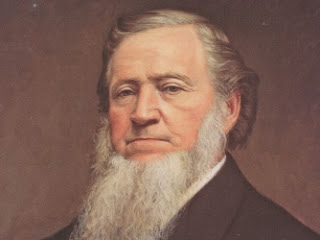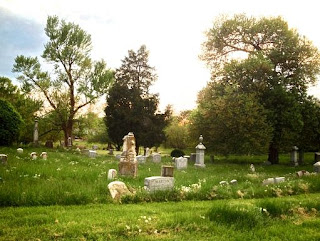Throughout the years of the Potato Famine, nearly a million Irish arrived in the United States, often to face hostility. The roughest welcome of all was in Boston, Massachusetts, with a population of about 115,000. In 1847, the first big year of the Famine emigration, that city was inundated with 37,000 Irish Catholics immigrants — and they kept coming. The result was “No Irish Need Apply” signs posted in shop windows and plant gates. John H. Walsh likely saw such signs when he arrived on these shores as a youth but ignored them, applying himself in the whiskey trade and creating for himself and his family a flourishing business that lasted some 35 years.
Walsh was born in County Tipperary about 1841, just as the potato famine was beginning. Although we have no photo, a passport application indicates he had a light complexion, blue eyes and a red beard. Most notable, he stood over six feet, quite tall at time when the average height of a Harvard graduate was five feet, seven inches. He arrived in America in 1865 at the age of 24, possibly having waited until the Civil War had ended. Immigrant Irish frequently found themselves marshaled into military ranks.
Walsh’s early years in America are lost in the mists of time, but he appears to have apprenticed with a Boston wholesale liquor house, learning the trade, saving his money, and biding his time to strike out on his own. He first surfaced in Boston business directories about 1878 as a liquor dealer and the proprietor of a boarding residence called “Centennial House.” The 1880 Census disclosed the population of that establishment. In addition to Walsh himself, listed as a “liquor dealer,” were his wife, Nancy, running the household, and two sons, James J., age 13, and William, age 11, both in school. Nancy was aided by a staff of two, one of them John’s sister, Katie Walsh. Among occupations of the eight boarders were two other liquor dealers, Richard Barry and Michael Kelly, and a barkeeper, Dennis Brown. It would not have been unusual if these men were working for Walsh; boarding with one’s employer was common in the time.
By 1880 Walsh was firmly ensconced in selling liquor from his headquarters in Haymarket Square, an historic former mercantile center in Boston. Opened in 1845, the square, shown above, was a well-known location from the mid-19th century to the mid-20th, when the buildings around it were demolished to make way for government offices.
 John H. Walsh & Company advertised widely in Boston newspapers, offering themselves as “importers and wholesalers.” Proof of the owner’s wholesale merchandising, likely to Boston area saloons and restaurants, is in the large ceramic jug shown here, holding a gallon of whiskey. For his retail trade and back of the bar, Walsh featured a long necked attractive amber-hued glass container. It was embossed in bold letters with the company name and on the base “Boston.”
John H. Walsh & Company advertised widely in Boston newspapers, offering themselves as “importers and wholesalers.” Proof of the owner’s wholesale merchandising, likely to Boston area saloons and restaurants, is in the large ceramic jug shown here, holding a gallon of whiskey. For his retail trade and back of the bar, Walsh featured a long necked attractive amber-hued glass container. It was embossed in bold letters with the company name and on the base “Boston.”
The Irish immigrant also marketed several proprietary brands of rye whiskey, including “Walsh’s,” trademarked by the owner in 1894, and “Sphinx,” “Owl,” “Kernwood,” and “Ashworth.” Evidence is that Walsh was rectifying this liquor, that is, blending raw whiskeys in a back room to achieve particular taste, smoothness and color.
 Walsh's flagship brand appears to have been Sphinx Rye, its labels depicting a Egyptian background replete with pyramids and the limestone statue of the Sphinx of Egypt, a reclining creature with a lion’s body and a human head. Even Walsh’s bottle stoppers contained the Sphinx image.
Walsh's flagship brand appears to have been Sphinx Rye, its labels depicting a Egyptian background replete with pyramids and the limestone statue of the Sphinx of Egypt, a reclining creature with a lion’s body and a human head. Even Walsh’s bottle stoppers contained the Sphinx image. Even as John Walsh was flourishing at the liquor trade, the condition of the Irish in Boston was improving as their numbers became a political force. As late as 1867, however, an anti-Irish, anti-Catholic candidate captured the Democratic nomination and was elected the city’s mayor. The first Irish mayor of Boston, with many others to come after, would not be elected until 1885. The “No Irish Need Apply” signs began to disappear.
Even as John Walsh was flourishing at the liquor trade, the condition of the Irish in Boston was improving as their numbers became a political force. As late as 1867, however, an anti-Irish, anti-Catholic candidate captured the Democratic nomination and was elected the city’s mayor. The first Irish mayor of Boston, with many others to come after, would not be elected until 1885. The “No Irish Need Apply” signs began to disappear. John Walsh lived long enough to see these changes in Boston and contributed to his adopted country in several ways. He was heavily involved in local politics, serving as a member of the Democratic City Committee and the State Central Committee and also helped organize the Irish Athletic Club of Boston. Another accomplishment was establishing the Centennial House hotel in Allston, Maine. He died in 1888.
 By that time, Walsh’s eldest son, James was approaching 30 years old and had worked with his father in John H. Walsh & Co., for a decade. While keeping the name of the liquor house constant, James brought new vigor and ideas to the firm. As an example, he trademarked both Sphinx and Owl Ryes and appears to have opened a second outlet at 14 Cross Street in Boston. He also was advertising an alcoholic tonic called “Walsh’s Rock, Rye and Gentian.”
By that time, Walsh’s eldest son, James was approaching 30 years old and had worked with his father in John H. Walsh & Co., for a decade. While keeping the name of the liquor house constant, James brought new vigor and ideas to the firm. As an example, he trademarked both Sphinx and Owl Ryes and appears to have opened a second outlet at 14 Cross Street in Boston. He also was advertising an alcoholic tonic called “Walsh’s Rock, Rye and Gentian.”
 James Walsh also issued a number of shot glasses advertising his proprietary brands of whiskey. These items would have been given to special customers, including saloonkeepers and bartenders using Walsh’s liquor in their establishments. The detailed etching on these glasses, both the sphinx and the owl, render them of particular interest.
James Walsh also issued a number of shot glasses advertising his proprietary brands of whiskey. These items would have been given to special customers, including saloonkeepers and bartenders using Walsh’s liquor in their establishments. The detailed etching on these glasses, both the sphinx and the owl, render them of particular interest. 
 These glasses also would have been relatively more expensive to produce than the average shot. For his retail customers James provided a delightful pocket lucky piece. It incorporated a 1901 Indian head penny rampant on a four leaf clover and the motto “It is pure whiskey.”
These glasses also would have been relatively more expensive to produce than the average shot. For his retail customers James provided a delightful pocket lucky piece. It incorporated a 1901 Indian head penny rampant on a four leaf clover and the motto “It is pure whiskey.”
In his personal life, James had known tragedy. The 1900 census found him living as a widower in Boston’s Ward 25, caring for a four year old son, John H., named for the grandfather. By the 1910 census, this Walsh had married again, a woman whose first name was Ellen. John H. was now 14 and no other children were recorded. James’ 1910 occupation was given as “Owner - Liquor Business.”
How much longer James would have run the liquor business founded by his father is unclear. I can find no Boston business directory entry for John H. Walsh & Co., after 1913. Even so, the firm the Irish immigrant had founded as early as 1878 had survived at least 35 years. With men like John Walsh applying their talents in Boston, the Irish had come a long way over that span — and would go further still. In 1913 the mayor of Boston was John F. (“Honey Fitz”) Fitzgerald, the grandfather of President John Fitzgerald Kennedy.
Note: This vignette unfortunately lacks details on John Walsh’s early life in Ireland and his occupational history from 1865 to 1878. The material on James Walsh also is sketchy. I am hope a relative who has done genealogical work on these Walshes will see the post and help me fill in the blanks and correct any wrong assumptions I may have made.
Note 2: In 2018 Peter Samuelson, a noted collector from the Northeast of labeled whiskeys, was kind enough to send me the striking labels of Walsh's Sphinx whiskey. I was able to add them above and appreciate his sending them to me.
Note 2: In 2018 Peter Samuelson, a noted collector from the Northeast of labeled whiskeys, was kind enough to send me the striking labels of Walsh's Sphinx whiskey. I was able to add them above and appreciate his sending them to me.




















































